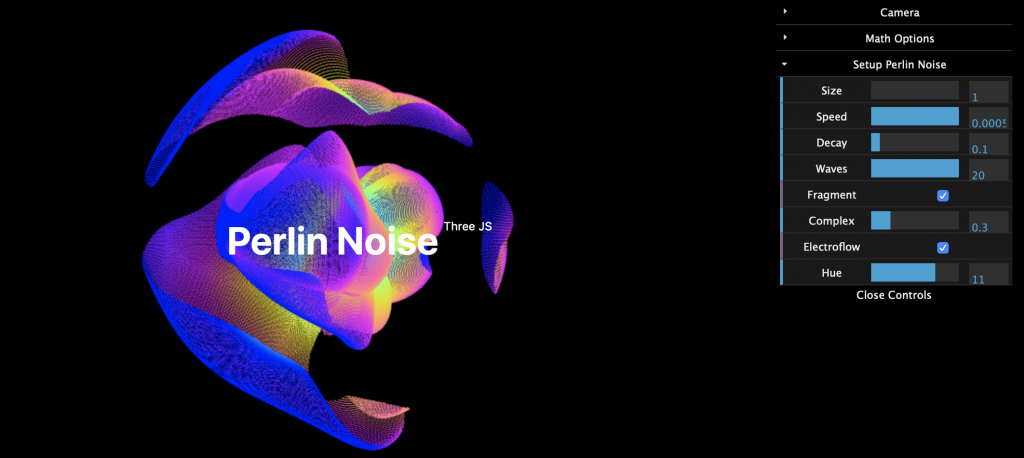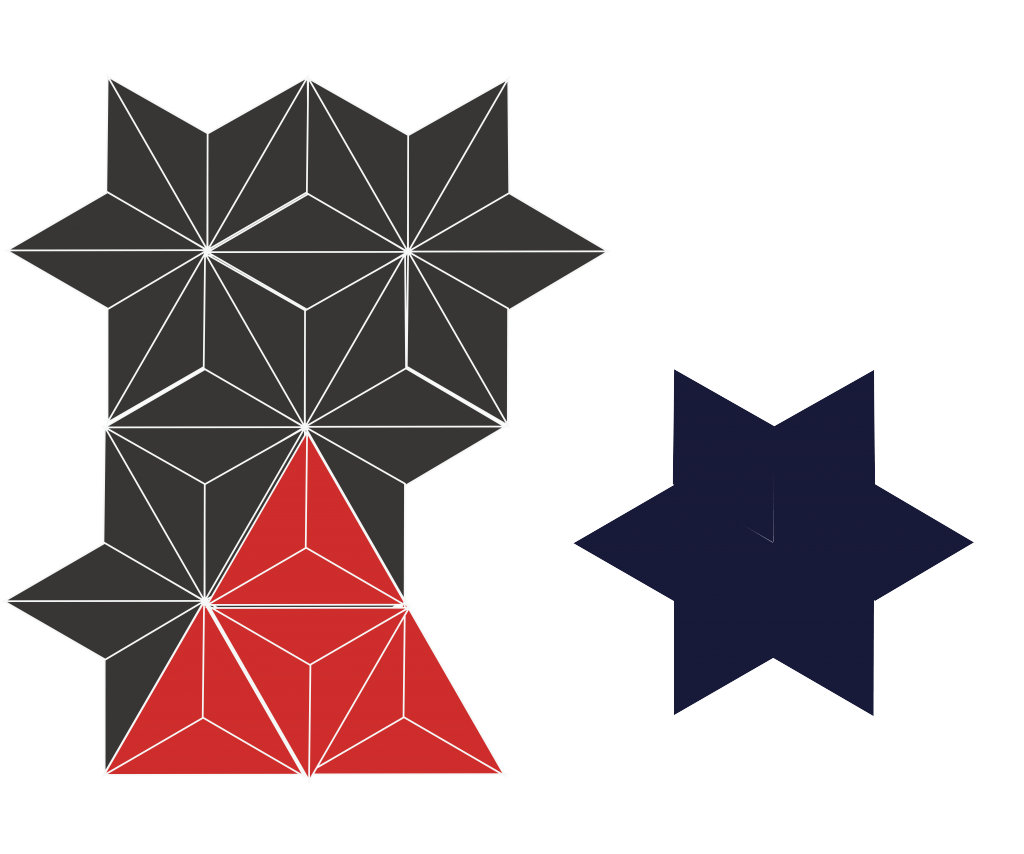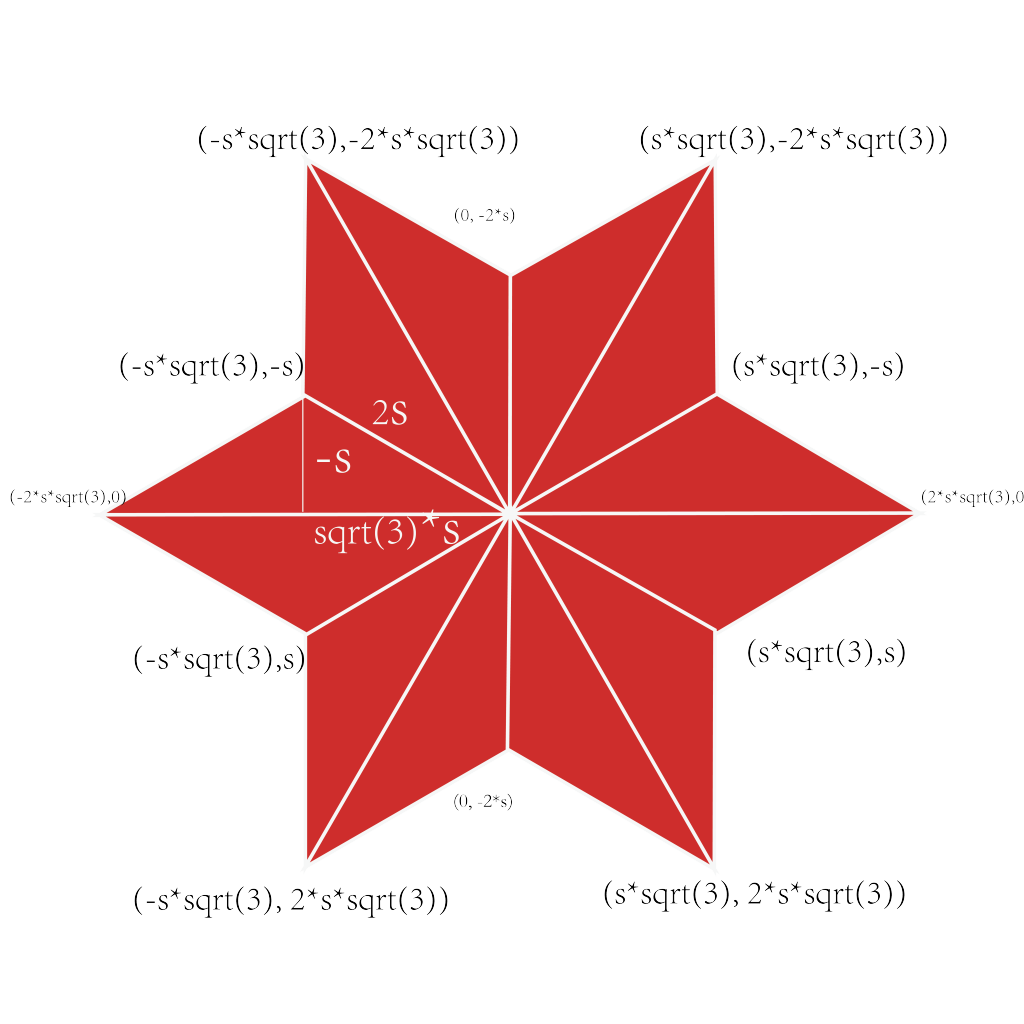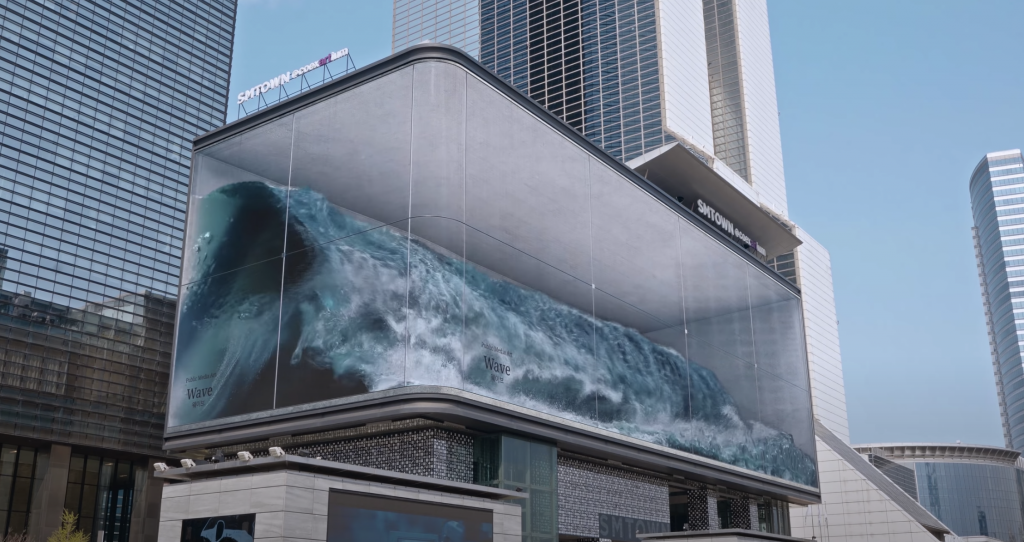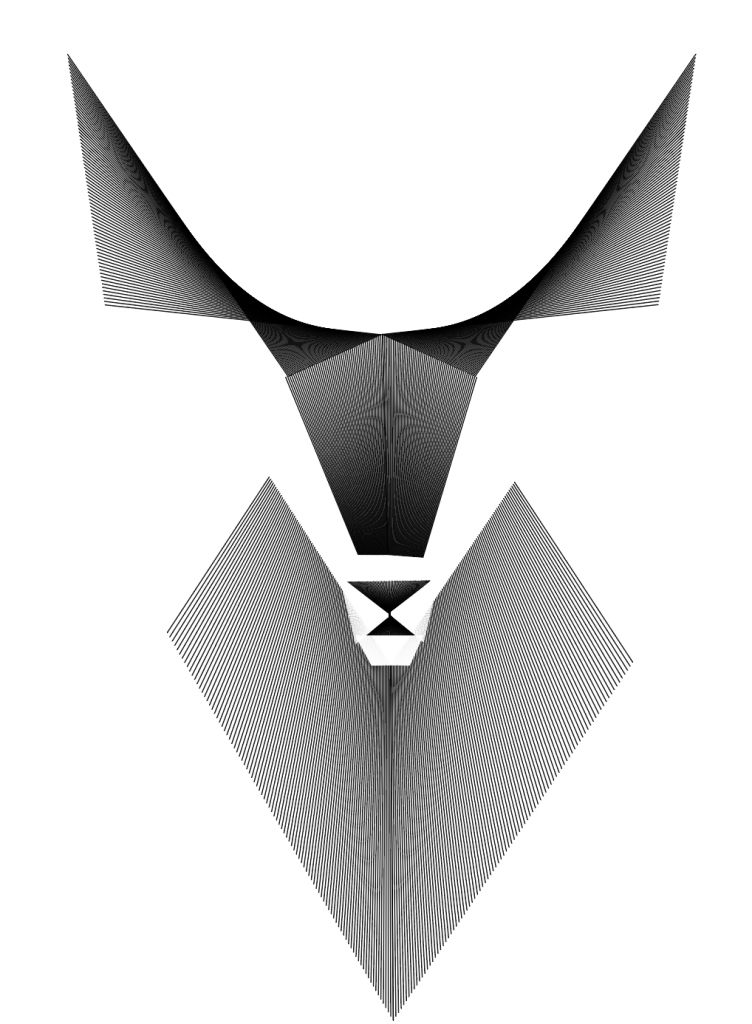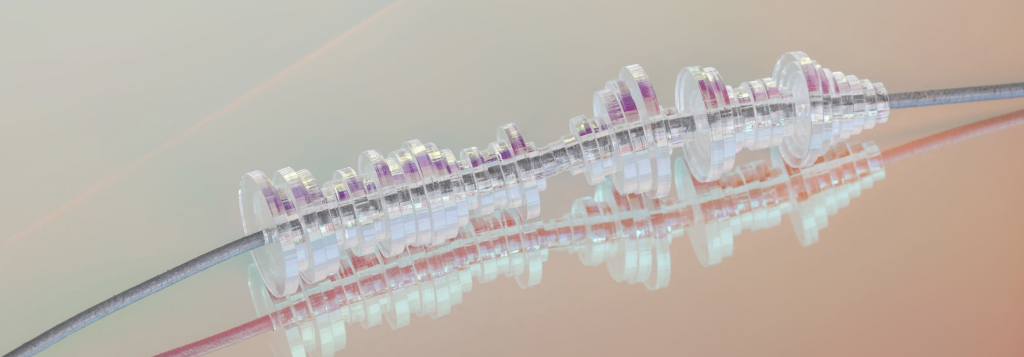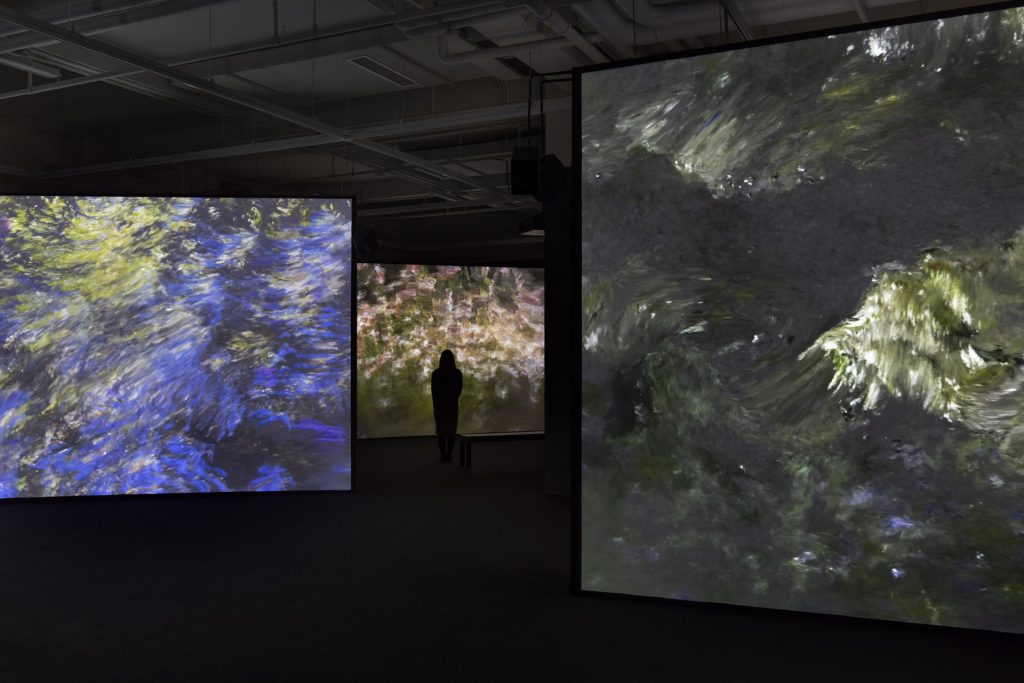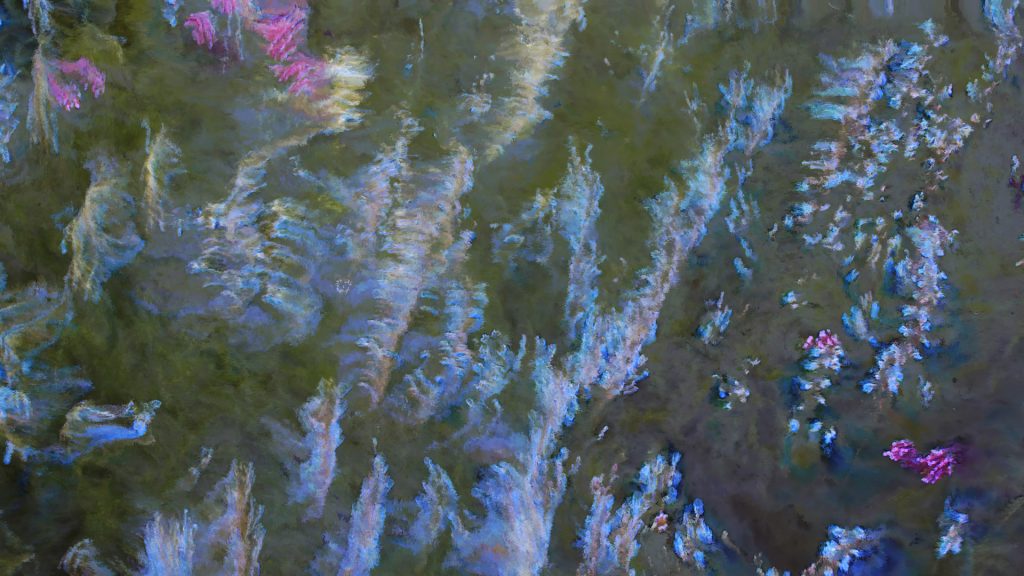My concept is creating a very elaborated and aesthetic pattern out of one kind of simple geometric shapes.
sketchvar angle=0;
var r;
function setup() {
createCanvas(600, 450);
frameRate(12);
}
function draw() {
//switch color according to mouseX position
if(mouseX<300){
background(100,165,172);
noFill();
stroke(255,196,234);
}
else{
background(255,196,234);
noFill();
stroke(100,165,172);
}
//set the new origin so that ellipses rotate around the center
translate(300,235);
push();
//rotate the first set of ellipses 30 degrees
rotate(radians(30));
ellipseMode(CENTER);
ellipse(0,100,min(100,Math.abs(mouseX-300)),min(200,Math.abs(mouseY-225)));
ellipse(0,100,min(105,Math.abs(mouseX-255)),min(199,Math.abs(mouseY-224)));
ellipse(0,100,min(110,Math.abs(mouseX-250)),min(198,Math.abs(mouseY-223)));
ellipse(0,100,min(115,Math.abs(mouseX-195)),min(197,Math.abs(mouseY-222)));
ellipse(0,100,min(120,Math.abs(mouseX-190)),min(196,Math.abs(mouseY-221)));
//60
rotate(radians(30));
ellipseMode(CENTER);
ellipse(0,100,min(100,Math.abs(mouseX-300)),min(200,Math.abs(mouseY-225)));
ellipse(0,100,min(105,Math.abs(mouseX-255)),min(199,Math.abs(mouseY-224)));
ellipse(0,100,min(110,Math.abs(mouseX-250)),min(198,Math.abs(mouseY-223)));
ellipse(0,100,min(115,Math.abs(mouseX-195)),min(197,Math.abs(mouseY-222)));
ellipse(0,100,min(120,Math.abs(mouseX-190)),min(196,Math.abs(mouseY-221)));
//90
rotate(radians(30));
ellipseMode(CENTER);
ellipse(0,100,min(100,Math.abs(mouseX-300)),min(200,Math.abs(mouseY-225)));
ellipse(0,100,min(105,Math.abs(mouseX-255)),min(199,Math.abs(mouseY-224)));
ellipse(0,100,min(110,Math.abs(mouseX-250)),min(198,Math.abs(mouseY-223)));
ellipse(0,100,min(115,Math.abs(mouseX-195)),min(197,Math.abs(mouseY-222)));
ellipse(0,100,min(120,Math.abs(mouseX-190)),min(196,Math.abs(mouseY-221)));
//120
rotate(radians(30));
ellipseMode(CENTER);
ellipse(0,100,min(100,Math.abs(mouseX-300)),min(200,Math.abs(mouseY-225)));
ellipse(0,100,min(105,Math.abs(mouseX-255)),min(199,Math.abs(mouseY-224)));
ellipse(0,100,min(110,Math.abs(mouseX-250)),min(198,Math.abs(mouseY-223)));
ellipse(0,100,min(115,Math.abs(mouseX-195)),min(197,Math.abs(mouseY-222)));
ellipse(0,100,min(120,Math.abs(mouseX-190)),min(196,Math.abs(mouseY-221)));
//150
rotate(radians(30));
ellipseMode(CENTER);
ellipse(0,100,min(100,Math.abs(mouseX-300)),min(200,Math.abs(mouseY-225)));
ellipse(0,100,min(105,Math.abs(mouseX-255)),min(199,Math.abs(mouseY-224)));
ellipse(0,100,min(110,Math.abs(mouseX-250)),min(198,Math.abs(mouseY-223)));
ellipse(0,100,min(115,Math.abs(mouseX-195)),min(197,Math.abs(mouseY-222)));
ellipse(0,100,min(120,Math.abs(mouseX-190)),min(196,Math.abs(mouseY-221)));
//180
rotate(radians(30));
ellipseMode(CENTER);
ellipse(0,100,min(100,Math.abs(mouseX-300)),min(200,Math.abs(mouseY-225)));
ellipse(0,100,min(105,Math.abs(mouseX-255)),min(199,Math.abs(mouseY-224)));
ellipse(0,100,min(110,Math.abs(mouseX-250)),min(198,Math.abs(mouseY-223)));
ellipse(0,100,min(115,Math.abs(mouseX-195)),min(197,Math.abs(mouseY-222)));
ellipse(0,100,min(120,Math.abs(mouseX-190)),min(196,Math.abs(mouseY-221)));
//210
rotate(radians(30));
ellipseMode(CENTER);
ellipse(0,100,min(100,Math.abs(mouseX-300)),min(200,Math.abs(mouseY-225)));
ellipse(0,100,min(105,Math.abs(mouseX-255)),min(199,Math.abs(mouseY-224)));
ellipse(0,100,min(110,Math.abs(mouseX-250)),min(198,Math.abs(mouseY-223)));
ellipse(0,100,min(115,Math.abs(mouseX-195)),min(197,Math.abs(mouseY-222)));
ellipse(0,100,min(120,Math.abs(mouseX-190)),min(196,Math.abs(mouseY-221)));
rotate(radians(30));
//240
ellipseMode(CENTER);
ellipse(0,100,min(100,Math.abs(mouseX-300)),min(200,Math.abs(mouseY-225)));
ellipse(0,100,min(105,Math.abs(mouseX-255)),min(199,Math.abs(mouseY-224)));
ellipse(0,100,min(110,Math.abs(mouseX-250)),min(198,Math.abs(mouseY-223)));
ellipse(0,100,min(115,Math.abs(mouseX-195)),min(197,Math.abs(mouseY-222)));
ellipse(0,100,min(120,Math.abs(mouseX-190)),min(196,Math.abs(mouseY-221)));
rotate(radians(30));
//270
ellipseMode(CENTER);
ellipse(0,100,min(100,Math.abs(mouseX-300)),min(200,Math.abs(mouseY-225)));
ellipse(0,100,min(105,Math.abs(mouseX-255)),min(199,Math.abs(mouseY-224)));
ellipse(0,100,min(110,Math.abs(mouseX-250)),min(198,Math.abs(mouseY-223)));
ellipse(0,100,min(115,Math.abs(mouseX-195)),min(197,Math.abs(mouseY-222)));
ellipse(0,100,min(120,Math.abs(mouseX-190)),min(196,Math.abs(mouseY-221)));
//300
rotate(radians(30));
ellipseMode(CENTER);
ellipse(0,100,min(100,Math.abs(mouseX-300)),min(200,Math.abs(mouseY-225)));
ellipse(0,100,min(105,Math.abs(mouseX-255)),min(199,Math.abs(mouseY-224)));
ellipse(0,100,min(110,Math.abs(mouseX-250)),min(198,Math.abs(mouseY-223)));
ellipse(0,100,min(115,Math.abs(mouseX-195)),min(197,Math.abs(mouseY-222)));
ellipse(0,100,min(120,Math.abs(mouseX-190)),min(196,Math.abs(mouseY-221)));
//330
rotate(radians(30));
ellipseMode(CENTER);
ellipse(0,100,min(100,Math.abs(mouseX-300)),min(200,Math.abs(mouseY-225)));
ellipse(0,100,min(105,Math.abs(mouseX-255)),min(199,Math.abs(mouseY-224)));
ellipse(0,100,min(110,Math.abs(mouseX-250)),min(198,Math.abs(mouseY-223)));
ellipse(0,100,min(115,Math.abs(mouseX-195)),min(197,Math.abs(mouseY-222)));
ellipse(0,100,min(120,Math.abs(mouseX-190)),min(196,Math.abs(mouseY-221)));
//360
rotate(radians(30));
ellipseMode(CENTER);
ellipse(0,100,min(100,Math.abs(mouseX-300)),min(200,Math.abs(mouseY-225)));
ellipse(0,100,min(105,Math.abs(mouseX-255)),min(199,Math.abs(mouseY-224)));
ellipse(0,100,min(110,Math.abs(mouseX-250)),min(198,Math.abs(mouseY-223)));
ellipse(0,100,min(115,Math.abs(mouseX-195)),min(197,Math.abs(mouseY-222)));
ellipse(0,100,min(120,Math.abs(mouseX-190)),min(196,Math.abs(mouseY-221)));
pop();
}

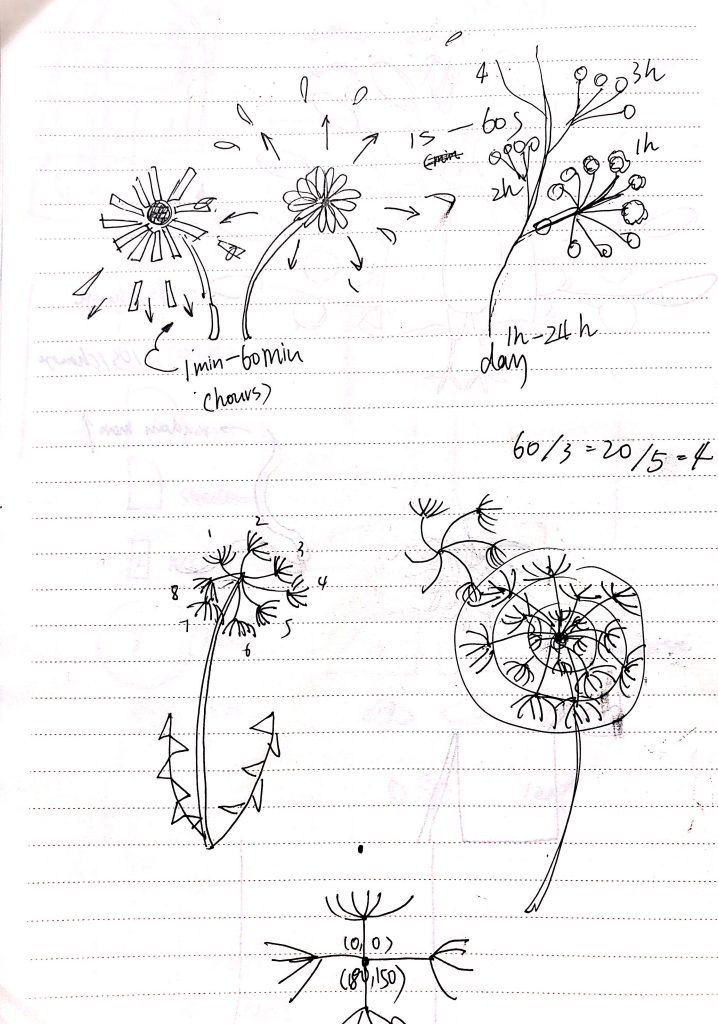
![[OLD FALL 2020] 15-104 • Introduction to Computing for Creative Practice](https://courses.ideate.cmu.edu/15-104/f2020/wp-content/uploads/2021/09/stop-banner.png)
